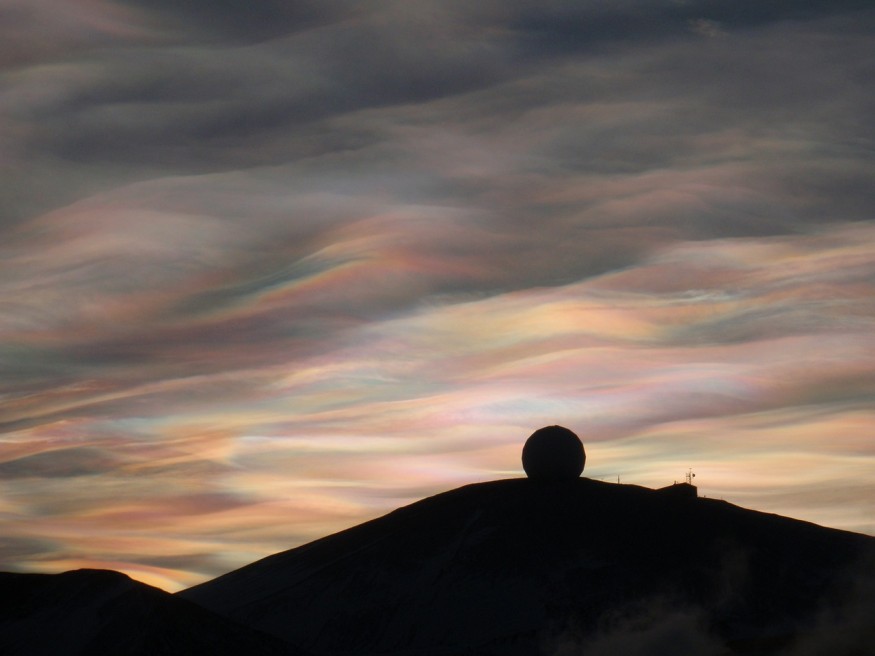Different cloud forms may be one of nature's most beautiful and romantic sights. These masses of liquid droplets are a complicated and scientifically fascinating natural occurrence. The remarkable truth is that all clouds are made of condensed water or ice regardless of their shape or appearance.
More so, these gorgeous cloud forms have a global cloud categorization system that scientists use. Back in 1802, a British industrial chemist Luke Howard, who was also an amateur meteorologist, was the first to propose a cloud naming system. Clouds are now classified based on their shape, height, creation process, and other characteristics.

Strange Thing in the Sky
One of the remarkable cloud formations was seen on Sunday evening and Monday morning as skywatchers across Scotland were treated to a rare sight: a nacreous cloud. It is also known as the mother-of-pearl cloud due to its glittering colorful lights.
As one of the highest clouds in our sky, they form in very cold temperatures and so are rare to see in the UK. As per BBC News, nacreous clouds form under extremely cold circumstances over polar areas inside the stratosphere at altitudes between 12 to 19 miles, which is higher than regular cloud cover. They are rarely seen in the UK as it needs extremely cold temperatures.
The frigid arctic air that has been held in place by powerful winds high in the atmosphere, known as the polar vortex, sometimes weakens and allows this colder air to drop south to the UK's latitude.
Nacreous clouds are best visible a few hours before or after sunset or dawn when they are still illuminated by sunlight since they are so high, which makes them look much brighter in the evening sky.
The beautiful colors are caused by sunlight reflecting off small ice crystals in the cloud, which is formed in the air that is roughly -80 degrees Celsius. BBC Weather Watchers from Moray, the Highlands, and Aberdeenshire sent photographs of the mother-of-pearl cloud on Sunday evening and Monday morning.
Nacrous Clouds Explained
According to the Met Office, the old English word for "Nacre" means "mother of pearl". These rare clouds are usually recognized for their colored hue as they reflect after sunset and before sunrise. A phenomenon known as iridescence makes the colors look like those that reflect off a tiny coating of oil on top of the water.
When the Sun is barely below the horizon, nacreous clouds occur in the lower stratosphere over polar areas. The ice particles that make up nacreous clouds are substantially smaller than those that make up other types of clouds. The characteristic luminous effect is caused by these tiny particles scattering light in a particular way.
Nacreous clouds are lighted up by sunlight from beyond the horizon and reflect it to the ground, blazing brightly well before sunrise and after night because of their high altitude and the curvature of the Earth's surface. They are more likely to be seen when the Sun is 1 to 6 degrees below the horizon and at higher latitudes, such as in Scandinavia and northern Canada.
As a result, they are also known as polar stratospheric clouds. Also, they are more likely to appear during the arctic winter when it is -78 degrees Celsius.
RELATED ARTICLE: Rare Rainbow Scarf Cloud Stuns Residents in China: How Did It Form?
Check out more news and information on Clouds in Science Times.
© 2025 ScienceTimes.com All rights reserved. Do not reproduce without permission. The window to the world of Science Times.











